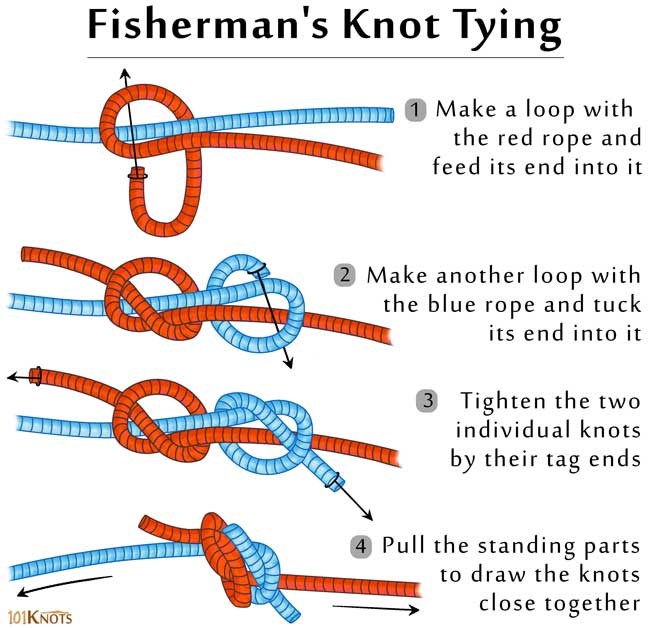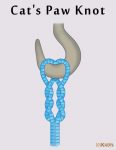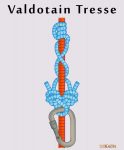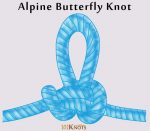Home / Bends , Boating Knots , Boy Scouting Knots , Climbing Knots , Decorative Knots , Fishing Knots / Fisherman’s Knot
Fisherman’s Knot
Fisherman’s knot, also known as English knot, consists of two overhand knots each one tied around the standing part of the other one. Though it is mainly used as a bend to join two lines, it can be easily used to connect the ends of a single length of rope to form a loop. The beauty of the knot lies in its symmetry.
How to Tie a Fisherman’s Knot
Start making the knot after bringing the ends of 2 lines to overlap each other parallely.
Tips
- It is good for tying on small diameter twines and strings, especially fishing lines.
Variations
- Double fisherman’s knot – Instead of employing overhand knots, it uses a couple of double overhand knots in their strangle knot forms. Stronger.
- Triple fisherman’s knot – In this variant, for each of the two stopper knots, the working end is wrapped thrice around the standing line before being fed into the loops. You can even have a quadruple version using 4
- True lover’s knot – Though tied on the same principle basically, the overlapping of the overhand knots is a bit different. Due to almost similar structure, sometimes used as an alternative name of the fisherman’s knot itself.
Advantages | Disadvantages |
|
|
Uses
- Fishing
- Knitting.
- Scouting.
- Net making.
- Tying webbing.
- Rock climbing and by arborists.
- Backing up other less secure knots.
- Making macramé jewelry, paracord bracelets and keychains.
- In knot-tying ceremonies of weddings to symbolize how bonds grow stronger under strain.
Steps to Tying a Fisherman’s Knot
- Make a loop with the red rope and feed its end into it
- Make another loop with the blue rope and tuck its end into it
- Tighten the two individual knots by their tag ends
- Pull the standing parts to draw the knots close together
Alternative
- Blood knot – Provides superior performance while fishing.
2 responses to “Fisherman’s Knot”
Leave a Reply
You must be logged in to post a comment.









In picture number 2 it does not show the blue rope wrapped correctly.
Thanks for pointing it out. The image has been corrected.